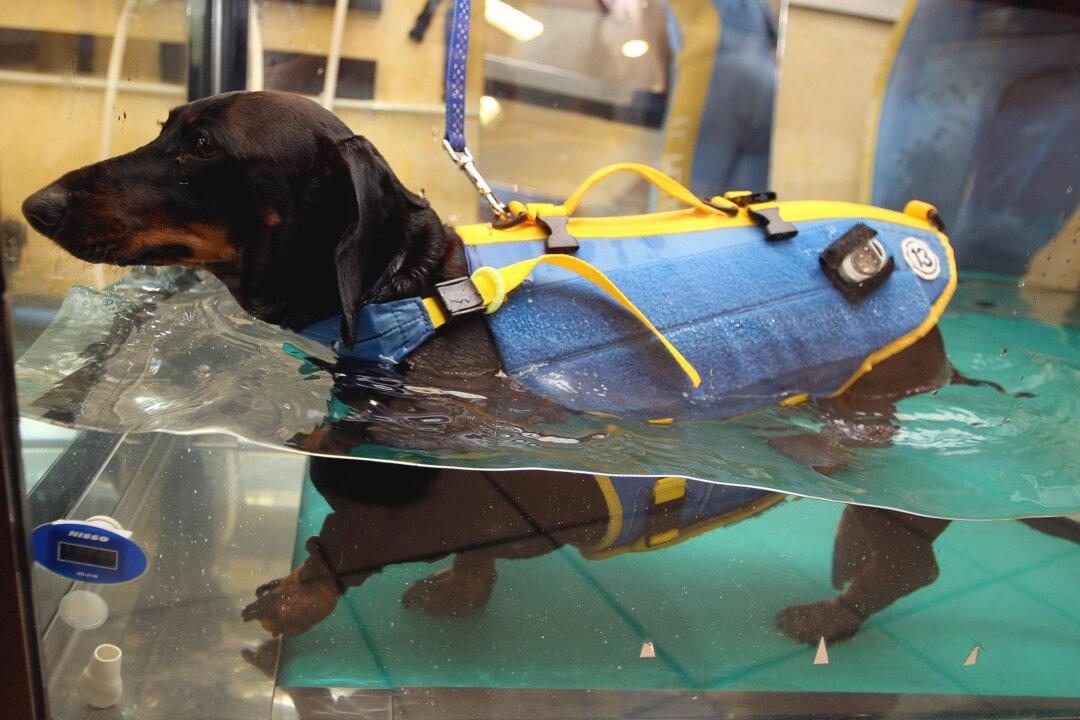Wednesday, Oct. 9, is National Pet Obesity Awareness day, a good time to take an honesty look at your pet and decide if it could use a diet.
Your pet should lose weight gradually, with a major change taking place over the course of several months. Webmd.com consulted veterinarian Todd R. Tams of VCA Antech and stylist Marissa Gimeno, whose chihuahua had become quite chubby, to get some tips on doggy dieting.
RELATED: Is Your Cat Fat? Is Your Dog Chubby?
The Association for Pet Obesity Prevention (APOP) also gives tips on how to help your dog or cat lose weight.
Here are some tips from these sources:
Dogs
1. Ask your veterinarian about optimal food portions. Labels on pet food may not be the best guidance, as size and other variables affect the portion animals should eat.
2. Honestly assess your pet’s diet, including treats and snacks given by family members, pet-sitters, and others. Cutting out these snacks and treats may help. If cutting out treats altogether is not realistic, try healthier alternatives or setting a limit. You can download a log on the APOP website to help keep track.
3. Cut back daily portions by 15 to 20 percent for a six- to eight-week period.
4. Don’t give in to begging. Your dog will beg if it knows it will get more treats or snacks this way.
5. After trying other methods, you can try switching to diet dog food. Webmd suggests Newman’s Own and AvoDerm among others, along with more exercise. Switch to diet food gradually, mixing it in with the regular food to start.
6. Make sure your dog is getting exercise. Tams recommends 10 to 15 minutes several times a day. Doggy daycare or even hiring a local teen to walk your dog may help if you are too busy.
7. Medications are available as a last resort.
Cats
Some of the tips for dogs also apply to cats, such as consulting a veterinarian to find the right food portions. Cat exercise isn’t as straightforward as dog exercise, however, among some other differences. Be cautious when decreasing your cat’s calorie intake, as cats can develop a liver disease if the calories are reduced too drastically. Here are some added tips for cats from APOP:
1. Use a canned diet food several times a day, warming it or adding ketchup, oregano, or salmon juice to make it tastier. Change your cat’s diet gradually. Allow several days for the transition.
2. You can get your cat moving more by playing “find the food.” Move the food bowl upstairs or downstairs or other places it has to search for it.
3. Play with your cat for 10 minutes twice a day or more. You can do this while you do other things, using a flashlight, balls, anything your cat will chase.
4. As with dogs, don’t give in to begging. Cats sometimes substitute food for affection. Pet your cat when it begs instead of feeding it.
5. Feed with small meals frequently. Do not use a self-feeder.
6. Offer fresh water instead of food. This can sometimes satisfy the cat.
7. In multi-cat households, feed the cats separately, keeping the dieting cat out of the room when the other cat is being fed.






